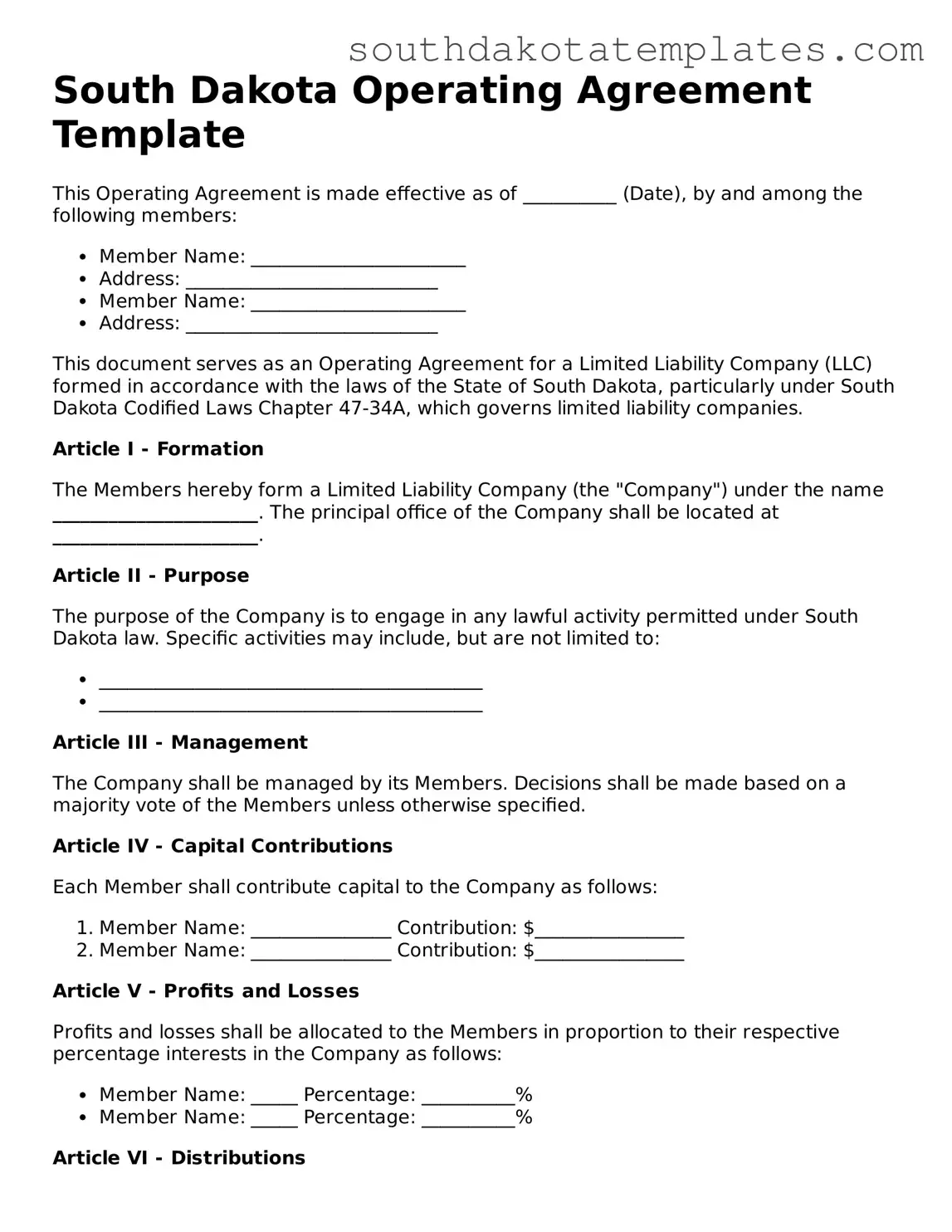Free South Dakota Operating Agreement Document
The South Dakota Operating Agreement form is a crucial document that outlines the management structure and operational guidelines for a limited liability company (LLC) in South Dakota. This agreement serves to define the rights and responsibilities of members, ensuring clarity and protection for all parties involved. To get started, fill out the form by clicking the button below.
Get Operating Agreement
